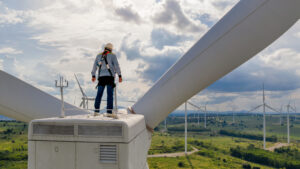
Addressing Common Pain Points In Wind Turbine Blade Repair
Keeping wind turbine blades in optimal condition is crucial for maintaining consistent energy output and ensuring the longevity of the entire system. As wind energy continues to grow in scale and importance, so does the need for practical, streamlined maintenance strategies that address the unique challenges faced in blade repair, especially in remote or high-wear environments.
Preventive maintenance, when introduced early in a turbine’s operational life, provides significant benefits. Identifying and fixing issues before they escalate helps avoid expensive repairs and reduces the likelihood of sudden, unplanned failures.
In many cases, skipping routine checks or postponing necessary upkeep leads to serious consequences: unplanned outages can cost operators over $1,600 per day in lost revenue. Viewed through this lens, regular maintenance isn’t just good practice—it’s a strategic cost-saving measure that also extends asset life and supports long-term energy goals.
For turbines located in isolated or environmentally challenging areas, the logistical hurdles only increase. Limited access, rugged terrain, and harsh weather conditions make it more complex to perform repairs on time and budget. These challenges underscore the importance of effective planning, streamlined workflows, and strategic utilization of labor and materials.
One solution gaining traction in this space is process material kitting. By packaging all the necessary repair consumables—such as vacuum bagging film, release fabrics, breather materials, and sealant tape—into organized, job-specific kits, maintenance crews can eliminate the time spent gathering materials on-site. This approach not only reduces delays but also minimizes errors and waste, enabling technicians to carry out repairs with greater confidence and consistency.
The benefits of kitting go beyond convenience. When every minute on-site matters, having a reliable, pre-arranged kit ensures technicians don’t face costly interruptions due to missing supplies or incompatible materials. This is especially important in repair windows where weather or daylight is limited, and downtime must be minimized as much as possible.
Another significant concern is working within tight budget constraints. Many operators are expected to do more with less, making smart resource allocation essential. Fortunately, the availability of advanced diagnostic tools has changed the game.
These tools enable teams to detect internal structural damage before it becomes visible, allowing for a more focused and efficient maintenance response. Rather than spending time inspecting every blade manually, crews can focus on the trouble spots and prioritize their efforts, thereby reducing unnecessary labor hours and material use.
At the same time, innovations in resin control and application are making composite repairs more effective than ever. Technicians now have better control over curing and placement, resulting in more substantial, more uniform repairs with minimal waste. This precision is crucial when working at heights or in unpredictable field conditions.
Sustainability is also becoming an increasingly important part of maintenance planning. Wind power already has a strong environmental advantage, but as the industry matures, there’s increasing pressure to ensure that the maintenance practices themselves align with broader ecological goals. Utilizing recyclable materials, implementing better waste management practices, and minimizing the need for repeat repairs are all integral to this effort.
As the wind energy sector continues to evolve, staying ahead of these maintenance challenges will be essential for long-term success. Scroll through the infographic below to see how today’s repair strategies are shaping a more efficient, sustainable future for wind turbine operations.